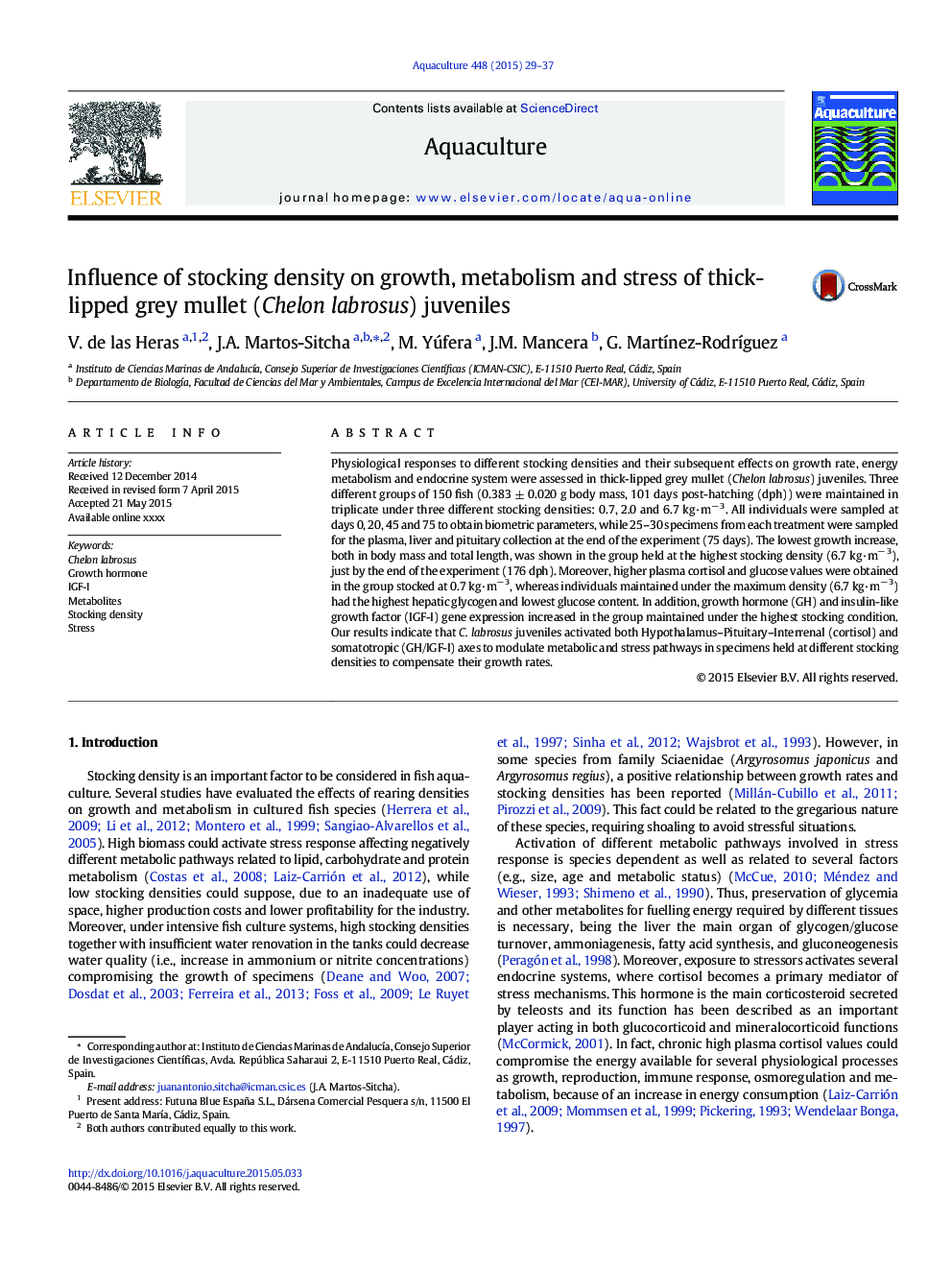| Article ID | Journal | Published Year | Pages | File Type |
|---|---|---|---|---|
| 8494485 | Aquaculture | 2015 | 9 Pages |
Abstract
Physiological responses to different stocking densities and their subsequent effects on growth rate, energy metabolism and endocrine system were assessed in thick-lipped grey mullet (Chelon labrosus) juveniles. Three different groups of 150 fish (0.383 ± 0.020 g body mass, 101 days post-hatching (dph)) were maintained in triplicate under three different stocking densities: 0.7, 2.0 and 6.7 kg·mâ 3. All individuals were sampled at days 0, 20, 45 and 75 to obtain biometric parameters, while 25-30 specimens from each treatment were sampled for the plasma, liver and pituitary collection at the end of the experiment (75 days). The lowest growth increase, both in body mass and total length, was shown in the group held at the highest stocking density (6.7 kg·mâ 3), just by the end of the experiment (176 dph). Moreover, higher plasma cortisol and glucose values were obtained in the group stocked at 0.7 kg·mâ 3, whereas individuals maintained under the maximum density (6.7 kg·mâ 3) had the highest hepatic glycogen and lowest glucose content. In addition, growth hormone (GH) and insulin-like growth factor (IGF-I) gene expression increased in the group maintained under the highest stocking condition. Our results indicate that C. labrosus juveniles activated both Hypothalamus-Pituitary-Interrenal (cortisol) and somatotropic (GH/IGF-I) axes to modulate metabolic and stress pathways in specimens held at different stocking densities to compensate their growth rates.
Related Topics
Life Sciences
Agricultural and Biological Sciences
Aquatic Science
Authors
V. de las Heras, J.A. Martos-Sitcha, M. Yúfera, J.M. Mancera, G. MartÃnez-RodrÃguez,
